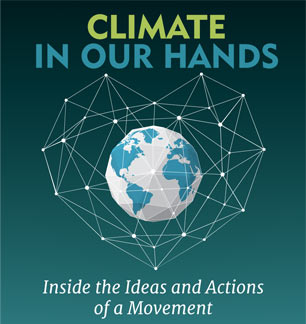
This story is part of the Climate in Our Hands collaboration between Truthout and YES! Magazine.
You can hear the sounds of new construction from just about any point on Sterling College’s bucolic Vermont campus. The whir of saws and plink of hammers ricochet off the nearby Lowell Mountains as students—26 percent more than were enrolled just two years ago—shuffle to class through a carpet of fall leaves.
Things have never been better at this small college, which specializes in environmental education. An entire Sustainable Agriculture and Food Systems Center, which will house a new major on the same topic, is in the works. And not a dime of the money used came from investments in fossil fuels—because the college sold off all its stock in that industry last year.
Several colleges and universities have completed the process of divestment. None has declared financial ruin.
On college campuses nationwide, the key argument against divestment—or removing all investments from oil, coal, and natural gas companies—has been that it’s not economically feasible; that divesting would be an abdication of fiduciary responsibility. Not “warranted or wise” were the exact words Harvard President Drew Faust used in October 2013 to excuse the Ivy League institution from taking its $30 billion endowment out of environmentally devastating corporations.
But evidence is mounting against that argument. Several colleges and universities have completed the process of divestment. None has declared financial ruin. In fact, many, like Sterling, are seeing improved returns on their investments.
Meanwhile, the call to divest has never been stronger. During the week of the People’s Climate March in September, individuals and institutions pledged to divest more than $50 billion from fossil fuels. And earlier this week, 350.org launched its campaign for a Global Divestment Day, an event planned for February 2015 that the organization hopes will lead to even greater financial pressure on fossil fuel companies from universities, organizations, and religious institutions.
With evidence and enthusiasm on the side of divestment, schools like Harvard may need to rethink their portfolios.
Three Days
Sterling College’s move to divest came at the behest of the school’s trustees, many of whom were already familiar with the issue. The school’s president, Matthew Derr, said that Sterling had a relatively small percentage of its investments in fossil fuel companies. But he felt divestment was the right thing to do because of the school’s environmental mission.
The financial committee broached the topic with the students and faculty to make sure there was campus-wide buy-in before moving forward. Then, Sterling hired Trillium Asset Management, a Boston-based firm that focuses on sustainable investing, to manage the transition.
“We sold everything in three days,” says Matt Patsky, Trillium’s CEO, who estimates that about 13 percent of the college’s endowment had been invested in fossil fuels in some way. “We sold all those funds and bought them a portfolio of individual stocks and individual bonds that were fossil fuel free.”
Patsky says that he rolls his eyes when he hears about schools promising to divest over the next five, 10, or even 15 years. “Why five years?” he says. “We know from history it can be done in a much shorter period of time.”
 Not long after Sterling College completed its divestment, the school announced that, for the first time in its history, its endowment had surged over $1 million.
Not long after Sterling College completed its divestment, the school announced that, for the first time in its history, its endowment had surged over $1 million.
It’s tempting to want to credit that success to its newer, cleaner portfolio, but that isn’t the whole picture. “They also had an aggressive capital campaign,” says Patsky.
Sterling is a pretty unusual school though. It’s tiny, with just 123 students. And it’s a work college, where students are required to hold on-campus jobs, thereby offsetting overhead costs. It might be tempting to call the school a divestment anomaly—but it’s not.
Divesting also offers the benefit of letting schools reinvest in things that fit with their beliefs.
Other schools that have divested are seeing the same kind of results. On October 31, 2013, Naropa University in Boulder, Colorado, finished its divestment process. This time, students were the driving force behind the campaign.
“We’re a values-driven school and we believe in leading by doing,” says Todd Kilburn, the school’s chief financial officer. “We value our role in being the tip of the spear on this issue.”
Unlike Sterling, Naropa is a medium-sized school, with both graduate and undergraduate programs. It also has a bigger endowment, around $6.25 million.
San Francisco-based Veris Wealth Partners helped Naropa manage its transition, which was completed in less than one year.
Almost exactly a year later, Patricia Farrar-Rivas, the CEO of Veris, said: “It hasn’t had a significant change on their portfolio.”
But what about a really big school? De Anza and Foothill Community colleges work together as a single “college district” that serves more than 600,000 students each year in the southern part of the San Francisco Bay area. The private foundation that supports the two schools is among the largest in California, with $33 million in assets. Unlike Naropa and Sterling, which are private and are attractive to students because of their strong environmental commitments, the state-mandated mission for De Anza and Foothills Community colleges is clear: to offer affordable education to the community.
While both of the community colleges have campus-wide sustainability management plans in place, it is neither institution’s main focus. “My first goal is a fiduciary one,” says Robin Lyssenko, interim executive director for the Foothill-De Anza Foundation. “I wouldn’t be here if I didn’t believe that providing open access education was important.”
In 2012,students approached the foundation about divesting, but the foundation requested more information. Six months later, the students came back armed with data and a resolution passed by the student body. Lyssenko and the board were impressed.
A review of the foundation’s assets showed that about 1 percent of its $33 million in holdings was invested in some of the worst fossil fuel offenders. Eight months later, the foundation’s portfolio was clean of them. “To date, I don’t think there’s been an impact on our investments because of it,” says Lyssenko. In fact, the endowment recently broke $35 million—though that’s partly due to several successful fundraising campaigns.
The Mechanics of Divestment
It turns out that divesting is not nearly as calamitous as Harvard’s president might have us believe.
Any time you take stocks out of your portfolio you create a “tracking error,” which means that your portfolio will track differently than the overall index. If the S&P 500 is your baseline, taking out certain stocks will change how your portfolio performs in relation to that baseline. In the simplest terms, the more stocks you take out, the bigger your tracking error is going to be.
A tracking error isn’t necessarily a bad thing—a fund with a tracking error can do better than the overall index. But it tends to make investors nervous because there’s always a chance that things will go the other way. There’s a way to fix that though: Investors can reinvest the cash or proceeds from stock sales in ways that offset this tracking error.
When index managers are diverting funds from fossil fuels, they’re able to look at which ones have performed similarly to fossil fuels in the past—and reinvest in those. For example, a stock’s “beta estimate” quantifies a stock’s volatility over time. Say you take Exxon Mobile out of your portfolio and it has a beta estimate of .79; you could replace that stock with Target, which historically has had a beta of .78. By doing this you can tweak your divested portfolio so it tracks similarly to the overall index.
Divesting also offers the benefit of letting schools reinvest in things that fit with their beliefs.At Sterling this meant reinvesting in companies that produce solar power, an LED light bulb manufacturer, and even in a company that produces carpets from recycled materials. Naropa was already invested in green real estate and sustainable forestry and land conservation companies prior to its divestment process, but it added even more weight to those investments, as well as adding more healthy living-focused companies to its portfolios.
If trading Exxon Mobile stock for shares in sustainable businesses seems like a bad financial move, consider this: A 1997 paper in the Journal of Investing analyzed the long-term performance of portfolios that had been modified to exclude a variety of unsavory investments. It found that portfolios adjusted for all social issues—with the exception of military-related companies—performed better than their non-adjusted counterparts.
This is partly because socially questionable stocks often have high volatility. Oil is a perfect example. Depending on world events, oil prices can be up, down and around the corner before noon. (Oil is also currently having a terrible quarter, which is great for those that have divested, but may not always be the case.)
All of this data makes Harvard’s reluctance to divest (even as students and faculty engaged in a week-long hunger strike this fall) seem, well, silly. Sure, Harvard has the largest endowment of any university in the nation, but risk is risk, regardless of dollar amount.
Instead, what’s most likely causing Harvard’s noncommittal response is pressure from its trustees and big donors, many of which (like hedge fund manager Kenneth Griffin, who gave $150 million earlier this year) have assets tied up in the fossil fuel industry.
If a university like Harvard dumped its massive volume of stocks, prices might be affected. And that would be a problem for large shareholders like Griffin, an outspoken supporter of the Keystone XL pipeline.
But advocates of divestment say this isn’t so much about money as about creating a sense that oil companies are social pariahs.
Ultimately, “The incremental risk of divesting is really, really minimal,” says Liz Michaels, director of environmental, social, and governance investing and socially responsible investing at the Aperio Group, a firm based in Sausalito, California, that specializes in hand-picking stocks for investors. “Despite that, there’s some decision-making that has to go into it.”
At Sterling, that process was easy. “When it was brought up, it wasn’t so much of an ‘aha!’ moment as it was a ‘duh!’ moment,” says President Derr. He adds, “We knew we were willing to forgo the concept of maximum return to be in line with our mission.”
What the school’s administrators didn’t know, however, was how easily divestment could help them meet their responsibilities to both students and the bottom line—no fossil fuels required.
Our most important fundraising appeal of the year
December is the most critical time of year for Truthout, because our nonprofit news is funded almost entirely by individual donations from readers like you. So before you navigate away, we ask that you take just a second to support Truthout with a tax-deductible donation.
This year is a little different. We are up against a far-reaching, wide-scale attack on press freedom coming from the Trump administration. 2025 was a year of frightening censorship, news industry corporate consolidation, and worsening financial conditions for progressive nonprofits across the board.
We can only resist Trump’s agenda by cultivating a strong base of support. The right-wing mediasphere is funded comfortably by billionaire owners and venture capitalist philanthropists. At Truthout, we have you.
We’ve set an ambitious target for our year-end campaign — a goal of $250,000 to keep up our fight against authoritarianism in 2026. Please take a meaningful action in this fight: make a one-time or monthly donation to Truthout before December 31. If you have the means, please dig deep.